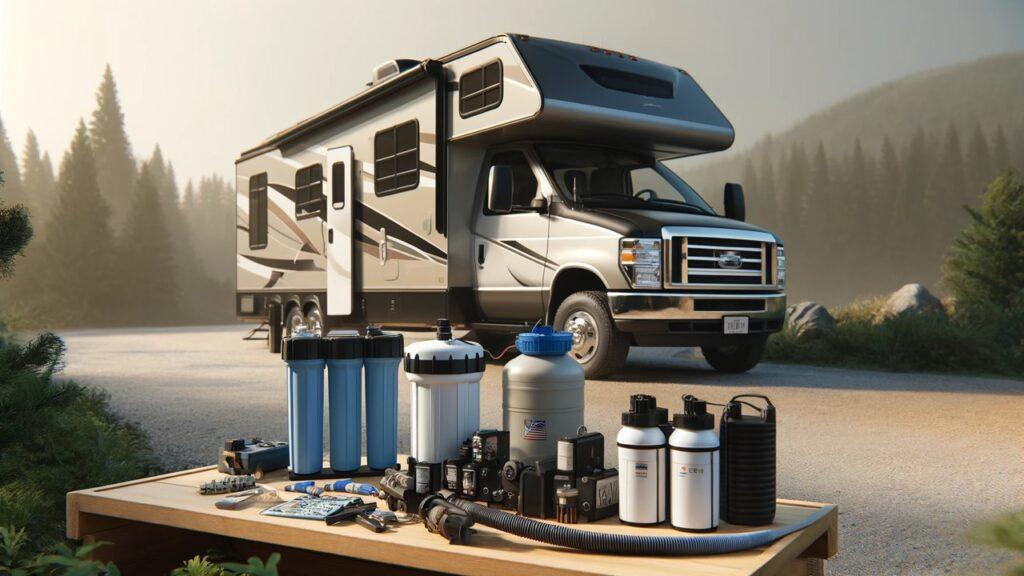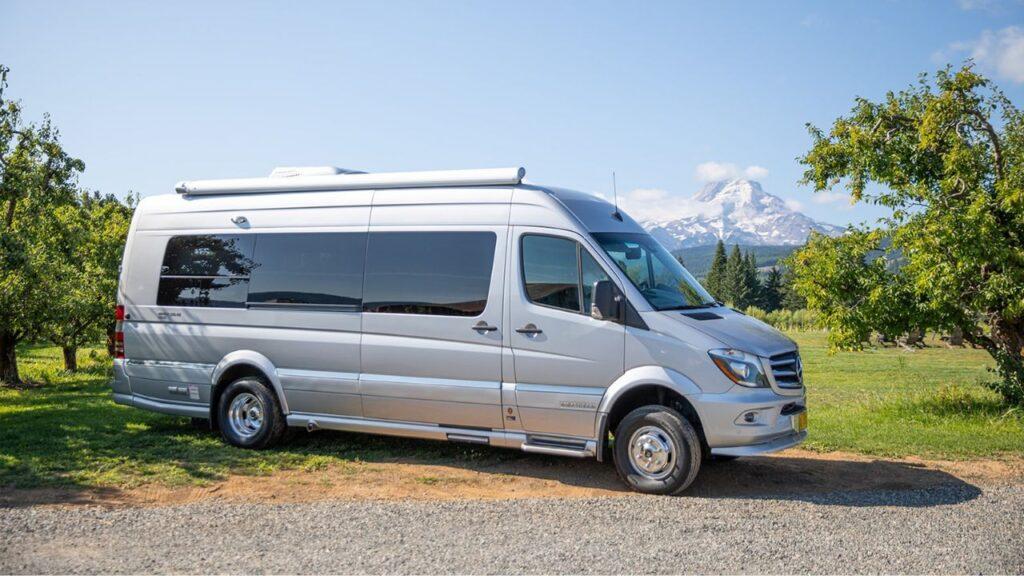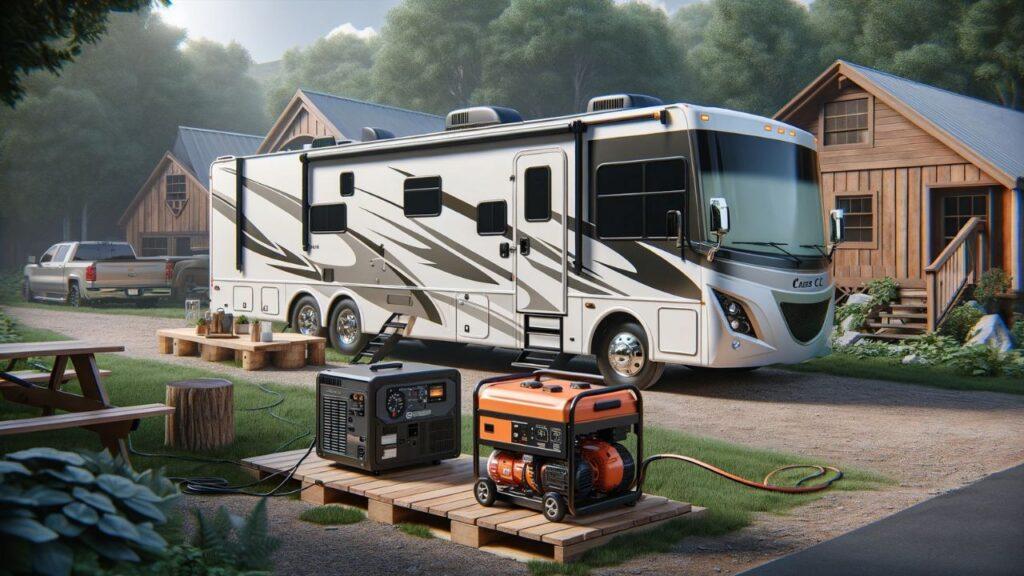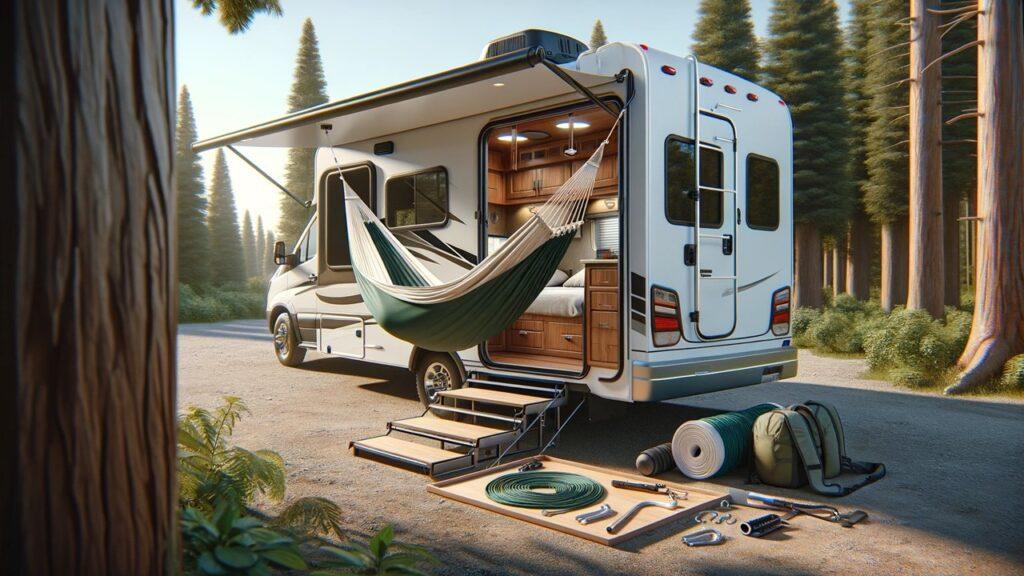
The Salt River in Arizona is a great spot for outdoor fun. You can float on the water, paddle a kayak, or even go fishing. It’s a peaceful place, full of nature, away from the city noise. In this guide, “Everything You Need to Know About The Salt River in Arizona,” we’ll walk you through all the cool things you can do there. We’ll also share when to visit and some tips from locals. Whether it’s your first time or you’ve been before, you’ll find something new to enjoy. The Salt River isn’t just a river; it’s a little slice of adventure. Families love it. Friends make memories there. Even solo explorers find something special. This guide is here to help you make the most of your visit. Get ready to dive into all the fun, learn the best spots, and plan your trip. The Salt River is waiting for you.
The Geography and History of the Salt River
The Salt River isn’t just another river; it’s a big part of Arizona’s story. It’s been flowing for a long time, shaping the land and helping people survive in the desert. Knowing where the Salt River flows and how it’s been used makes you appreciate it even more. Let’s dive into what makes this river so important, not just for now but for all of Arizona’s history.
Geographical Overview
The Salt River begins high up in the mountains. It starts as small streams that come together, turning into a larger river. From there, it flows through the Tonto National Forest, which is a huge area full of trees, wildlife, and beautiful landscapes. As the river moves along, it cuts through deep canyons and eventually makes its way into the desert. Even though Arizona is mostly dry, the Salt River brings water and life to the land. The river doesn’t just flow freely; it’s controlled by dams and reservoirs that store water for cities like Phoenix. Without the Salt River, the desert around Phoenix would be a lot tougher to live in.
Historical Significance
The history of the Salt River goes back thousands of years. Long before modern cities existed, Native American tribes lived along its banks. They depended on the river for everything—drinking water, food, and farming. They even built canals to help grow their crops. These early people knew how important the river was, and they took care of it. Later on, when settlers arrived, they also saw how valuable the Salt River was. They expanded the canal system, turning the area into fertile farmland. The river played a huge role in making Arizona what it is today. It’s a bit like a time machine, showing us how people have lived and worked with nature over the centuries.
Environmental Importance
The Salt River is more than just water. It’s a whole world of plants and animals. Along the river, you’ll find forests full of towering trees and thick bushes. These areas are home to all sorts of wildlife, from birds to deer to smaller critters like rabbits and squirrels. The river is especially important for animals in the desert, where water is hard to find. Keeping the river healthy means protecting the homes of these creatures. There are also efforts to keep the river clean and flowing, so it can continue to be a lifeline for both people and wildlife.
When you think about it, the Salt River is like Arizona’s heart. It’s been beating for a long time, pumping life into the land and making it possible for people to live and thrive in a tough environment. Understanding its geography and history helps us see why this river is so special and why it’s worth protecting.
Recreational Activities on the Salt River
The Salt River is a playground for anyone who loves being outdoors. There’s no shortage of things to do, whether you’re looking for something chill like floating in a tube or you’re up for a bit more adventure like kayaking. Let’s talk about all the fun activities you can dive into when you visit the Salt River, and how to make sure you have the best time possible. For vanlifers check out our article on some of the best kayaks for van life.
Tubing and Floating
If you’re looking for a laid-back day, tubing on the Salt River is just the thing. Imagine sitting in a big, comfy tube, floating down the river with the sun shining and the water keeping you cool. It’s super relaxing, and the views are awesome. You’ll see mountains, trees, and maybe even some wild horses. Tubing isn’t just fun; it’s also pretty easy. You can rent a tube at one of the local spots, and they’ll even shuttle you back to where you started once you’re done floating. The whole experience costs about $20 to $30, which includes your tube rental and the shuttle ride. Just make sure to bring some sunscreen, water shoes, and maybe a cooler with drinks and snacks. It’s a perfect way to spend a sunny day with friends or family.
Kayaking and Paddleboarding
If you want a bit more action, try kayaking or paddleboarding. The Salt River has spots with calm waters that are great for beginners. You don’t need to be a pro to have fun here. Kayaking lets you explore the river at your own pace, and you can get up close to the wildlife. Sometimes, you might spot a heron flying by or fish swimming below your kayak. Paddleboarding is also super fun if you’re up for a challenge. Standing on the board gives you a cool view of everything around you. You can rent kayaks or paddleboards from nearby shops, usually for about $40 to $60 for a few hours. It’s a bit more active than tubing, but it’s still peaceful and relaxing. Plus, it’s a great way to see parts of the river that you can’t reach by just floating.
Fishing Opportunities
For those who love fishing, the Salt River is like a hidden treasure. The river is full of different fish, like trout, bass, and catfish. Fishing here is a quiet, calming experience. You can find a spot along the riverbank, cast your line, and just enjoy the peaceful surroundings. It’s also a good idea to go early in the morning or later in the evening when the fish are most active. If you don’t have a fishing license, you’ll need to get one, which costs about $37 for the year. Local bait shops can help you out with gear and advice on the best fishing spots. Whether you’re an experienced angler or just starting out, fishing on the Salt River is something you don’t want to miss.
Hiking and Camping
If you love exploring, the Salt River area is packed with great hiking trails and camping spots. You can hike in the morning when it’s cool, then take a dip in the river to cool off. The trails range from easy walks to more challenging hikes, so there’s something for everyone. Camping is also a fantastic way to spend a night under the stars. You can set up your tent near the river, listen to the water flowing, and maybe even spot some nocturnal wildlife. The camping spots usually cost between $10 and $25 per night, depending on the location and facilities. Make sure to bring everything you need, like food, water, and a good tent. Camping near the Salt River is like hitting the reset button—it’s just you, nature, and the sound of the river.
The Salt River offers a mix of activities that make it a great place to visit. Whether you’re floating along on a tube, paddling through calm waters, casting a fishing line, or hiking through the wilderness, there’s always something new to discover. It’s a place where you can relax, have fun, and connect with nature, all at the same time.
Wildlife and Nature Around the Salt River
The Salt River isn’t just a place for fun; it’s also a home for lots of animals and plants. If you’re into nature, this river is like a big outdoor classroom. You can learn a lot just by watching what’s around you. Let’s check out the wildlife and natural beauty that makes the Salt River so special.
Common Wildlife
When you visit the Salt River, you might be lucky enough to spot some amazing animals. One of the coolest sights is the wild horses. These horses roam freely along the riverbanks, and seeing them is like stepping back in time. Besides horses, you’ll also find deer, rabbits, and maybe even a coyote if you’re quiet and patient. Birds are everywhere too. You can see eagles soaring high, herons fishing in the water, and colorful ducks floating by. It’s like being in the middle of a nature show.
Bird Watching
If you love birds, the Salt River is a dream come true. The area is packed with different types of birds, and each season brings something new. In spring, you’ll see bright red cardinals and blue jays. In summer, watch for hummingbirds zipping around the flowers. Grab a pair of binoculars and a bird guide, and you’re all set for a day of bird watching. The best time to spot birds is early in the morning or late in the afternoon when they’re most active. Find a quiet spot, sit back, and enjoy the show.
Conservation Efforts
The Salt River is a precious place, and people are working hard to keep it that way. There are groups that focus on protecting the river and the wildlife that lives there. They organize clean-up events, plant trees, and make sure the river stays healthy for future generations. You can even join in on these efforts if you want to help. It’s a great way to give back to nature and make sure the Salt River stays beautiful for years to come.
The wildlife and nature around the Salt River add to its magic. Whether you’re watching a wild horse, spotting a rare bird, or just enjoying the peace and quiet, you’ll feel connected to the natural world in a whole new way.
The Salt River’s Role in Arizona’s Water Supply
The Salt River isn’t just for fun and nature; it’s also super important for Arizona’s water supply. Without it, many people in Arizona wouldn’t have enough water for drinking, farming, or even taking a shower. Let’s explore how this river helps keep the state going.
Water Management and Usage
The Salt River is like a big, natural water pipe for Arizona. It collects water from rain and melting snow in the mountains, then carries it down to the valleys. But the river doesn’t just flow freely all the time. There are dams along the way that help control how much water gets stored and how much gets used. This water is super important for cities like Phoenix, where millions of people rely on it every day. It’s used for everything from drinking water to keeping lawns green. The Salt River Project (SRP) is the organization that manages this water. They make sure there’s enough for everyone, even during dry spells.
Dams and Reservoirs
To control the river, big dams were built along the Salt River. These dams create reservoirs, which are like giant lakes that store water. The biggest one is Roosevelt Dam, which holds a ton of water. These reservoirs are like savings accounts for water. During dry times, the water stored here can be released to make sure people and farms still get what they need. The dams also help with flood control, so the water doesn’t overflow and cause problems downstream.
Agricultural Significance
The Salt River isn’t just for drinking water; it’s also vital for farming. Arizona might be a desert, but thanks to the river, farmers can grow all kinds of crops. The water is used to irrigate fields, helping to grow things like cotton, hay, and vegetables. Without the Salt River, Arizona’s agriculture would struggle to survive. The river turns dry land into productive farms, which helps feed people not just in Arizona, but all over the country.
The Salt River is like a lifeline for Arizona. It’s more than just a river; it’s a crucial resource that keeps the state running. From supplying water to homes and farms to controlling floods, this river plays a huge role in making Arizona livable.
Best Times to Visit the Salt River
Planning a trip to the Salt River is all about timing. Depending on when you go, you can enjoy different activities, see more wildlife, or avoid the crowds. Let’s break down the best times to visit so you can make the most of your adventure.
Seasonal Overview
Each season at the Salt River has something unique to offer. Spring is beautiful with cooler weather and blooming flowers. It’s a perfect time for hiking and spotting wildlife like birds and wild horses. Summer is all about the water. This is when tubing and kayaking are at their peak because the days are hot, and the river is refreshing. Just remember, summer also brings more people, so it can get crowded. Fall cools down a bit, making it great for camping and fishing. The trees start to change color, adding a splash of beauty to the landscape. Winter is quieter, and though it’s too chilly for tubing, it’s still a peaceful time to explore the area with fewer crowds.
Event Calendar
There are also some fun events along the Salt River throughout the year. For example, during the summer, you might catch the Salt River Tubing season kick-off, where people dress up in costumes and float down the river. It’s a blast! There’s also the annual Salt River Clean-Up event, where volunteers come together to keep the river clean and beautiful. Participating in these events is a great way to enjoy the river while also giving back to the environment.
Crowd Management
If you’re not a fan of big crowds, you’ll want to plan your visit carefully. Weekends and holidays, especially in the summer, are the busiest times. If you can, try to visit on a weekday when it’s less crowded. Early mornings are also quieter, plus you’ll catch the sunrise, which is always worth the early wake-up. Another tip is to avoid tubing on holiday weekends when it feels like everyone in Arizona has the same idea. By picking the right time, you’ll have a much more relaxing experience.
Visiting the Salt River at the right time can make your trip even better. Whether you’re looking for a lively summer day on the water or a peaceful winter hike, planning ahead helps you enjoy the river at its best.
Tips from the Locals
Sometimes, the best advice comes from the people who know the area best— the locals. They have all the insider tips that can make your visit to the Salt River even better. From secret spots to must-know etiquette, here’s what the locals say.
Best Hidden Spots
If you want to avoid the usual crowds and discover something special, ask a local about the hidden gems. There are quiet spots along the river where you can relax, picnic, or just enjoy the view without tons of people around. One favorite spot is Coon Bluff, where you can often see wild horses grazing by the water. Another great place is Phon D Sutton Recreation Area, which is perfect for fishing and has fewer people than the more popular tubing areas. These hidden spots let you experience the Salt River’s beauty in peace.
Local Etiquette
When visiting, it’s important to respect the river and the people who live nearby. Locals appreciate when visitors keep the area clean, so always pack out what you bring in. If you see trash, picking it up helps keep the river beautiful for everyone. Also, be mindful of noise levels, especially if you’re near wildlife or other visitors. If you’re tubing, remember that alcohol is allowed, but keep it under control—nobody likes a noisy neighbor on the water. Following these simple rules makes the experience better for everyone.
Insider Advice
Locals also have great tips for making the most of your trip. For example, if you’re tubing, bring a small mesh bag to carry your trash. This way, nothing gets left behind in the river. If you’re fishing, the locals suggest using live bait like worms or minnows, which work best in these waters. And if you’re planning to camp, try to book your spot early, especially during the busy season. Campsites near the river can fill up fast. Finally, don’t forget to check the weather before you go. Arizona weather can change quickly, and you want to be prepared for anything.
Taking advice from locals can make your visit to the Salt River smoother and more enjoyable. They know all the tricks, and with their help, you’ll experience the river like a true insider.
Approximate Costs for Visiting the Salt River
Planning a trip to the Salt River? Knowing the costs can help you budget and enjoy your visit without surprises. Let’s break down what you can expect to spend on different activities, whether you’re going solo or with family.
Individual Costs
If you’re heading out on your own, the costs can be pretty manageable. For tubing, you’ll spend around to . This usually includes the tube rental and shuttle ride. If you’re into kayaking or paddleboarding, rentals can cost between to for a few hours. Fishing? You’ll need a license, which is about for the year. Camping fees range from to per night, depending on where you stay. So, whether you’re floating, paddling, or casting a line, your day on the river won’t break the bank.
Family Costs
Bringing the family along? Here’s what you can expect. For a day of tubing, it’s about to per person, which can add up. However, it’s a fun and affordable way to keep everyone entertained. Kayaking and paddleboarding for a family can be a bit pricier—rentals might cost to per person, but some places offer discounts for kids. If you plan on camping, budget to per night for a campsite. Plus, don’t forget to pack snacks and drinks, especially if you’re out all day. Overall, a family day at the Salt River is full of adventure and worth every penny.
Budget-Friendly Tips
Want to save a bit? Here are some tips. Bring your own food and drinks instead of buying them there—this can save you a lot. If you’re tubing, bring an extra tube to use as a cooler float, so you don’t have to rent one. For camping, book early or look for free camping spots nearby. If you plan to visit often, consider getting an annual pass for parking and entry fees. These small changes can make your trip more affordable without cutting out the fun.
Knowing the costs ahead of time helps you plan a trip that fits your budget, whether you’re going solo or with the whole family. With a bit of planning, you can enjoy everything the Salt River has to offer without worrying about overspending.
Safety Tips and Guidelines for Exploring the Salt River
Having fun at the Salt River is easy, but staying safe is just as important. Whether you’re tubing, hiking, or fishing, a few simple tips can keep your adventure safe and enjoyable. Let’s go over the basics.
General Safety Advice
When you’re out on the river, safety should always come first. For tubing, make sure you’re wearing a life jacket, even if you’re a good swimmer. The river might look calm, but currents can be strong, and accidents can happen. If you’re kayaking or paddleboarding, stick to calm sections of the river, especially if you’re new to it. Always let someone know where you’re going and when you plan to be back. And don’t forget to pack sunscreen, a hat, and plenty of water—Arizona sun is no joke, and you’ll need to stay hydrated.
Wildlife Safety
The Salt River area is full of wildlife, and while it’s amazing to see animals up close, it’s important to remember they’re wild. Keep a safe distance from animals like wild horses and snakes. Don’t try to feed or touch them. If you’re camping or hiking, store food securely to avoid attracting animals to your campsite. Also, watch where you step—rattlesnakes love to hide under rocks and bushes. Being aware of your surroundings helps keep you and the animals safe.
Environmental Etiquette
Respecting the environment is key to keeping the Salt River beautiful for everyone. Always pick up your trash and bring it with you when you leave. If you see litter, consider picking it up—even if it’s not yours. Follow the “Leave No Trace” principle, which means leaving the area just as you found it. Don’t disturb plants or wildlife, and stick to marked trails when hiking. Small actions like these help protect the river and its surroundings for future visitors.
Staying safe and respecting the environment ensures that everyone has a good time at the Salt River. By following these simple tips, you can enjoy all the river has to offer while keeping yourself and the natural world safe.
How to Get to the Salt River
Getting to the Salt River is pretty simple, but a little planning can make your trip smoother. Whether you’re driving, parking, or looking for shuttles, here’s what you need to know to reach this fun destination without any hassle.
Driving Directions
If you’re coming from Phoenix, the drive to the Salt River is quick and easy. Just head east on the Loop 202 freeway and take the exit for North Power Road. Follow the signs for the Salt River Recreation area, and you’ll be there in about 30 minutes. If you’re using GPS, you can plug in “Salt River Tubing” or “Coon Bluff Recreation Area” to get the exact route. The roads are well-marked, so you won’t have trouble finding your way. Just remember, weekends can get busy, so leaving early is a good idea to avoid traffic.
Parking Information
Once you arrive, you’ll find several parking areas near the river. Popular spots like the Phon D Sutton Recreation Area and Granite Reef Recreation Area have large parking lots, but they can fill up fast, especially during peak times. Parking fees are usually around $8 per vehicle, and some places require a Tonto National Forest pass, which you can buy online or at nearby gas stations. It’s worth having some cash on hand just in case. If the main lots are full, you might need to park a bit farther away and walk to the river, so pack light.
Public Transportation and Shuttles
If you don’t feel like driving, there are other ways to get to the Salt River. During the busy season, shuttle services are available from various points in the Phoenix area. These shuttles take you directly to the river and back, which is super convenient if you plan to tube and don’t want to deal with parking. Prices for shuttle services vary but are generally around $10 to $15 per person. Public buses don’t run directly to the river, so if you’re relying on public transport, combining a bus ride with a shuttle service is your best bet.
Getting to the Salt River is easy, whether you’re driving yourself or catching a shuttle. With a little planning, you’ll be at the river and ready for adventure in no time.
Salt River: Local Culture and Community
The Salt River isn’t just a natural wonder; it’s also a place rich in local culture and community. From its deep roots with Native American tribes to the friendly vibe you’ll find today, the Salt River area is filled with stories and connections that make it special. Let’s explore how the river ties into the local life and culture.
Indigenous Connection
Long before modern development, the Salt River was central to the lives of Native American tribes, especially the Salt River Pima-Maricopa Indian Community. For these tribes, the river was more than just water—it was a source of life and a spiritual place. They used its waters for farming, fishing, and daily living. Even today, the connection to the river remains strong within the community. Visiting the area, you can feel this deep history. The nearby museums and cultural centers often share stories and artifacts that tell the tale of the river’s significance to these tribes.
Local Businesses and Services
When you visit, you’ll notice a lot of local businesses that cater to river-goers. From tube rental shops to cozy cafes, the community around the Salt River thrives on tourism and outdoor activities. Supporting these local businesses not only makes your trip easier but also helps the local economy. Whether you’re grabbing a quick bite, renting gear, or even booking a guided tour, you’ll find that the people here are welcoming and knowledgeable. Many have been in the area for years and know the river like the back of their hand, so don’t be shy to ask for tips or advice.
Community Involvement
The people who live near the Salt River take pride in their community and the natural beauty that surrounds them. You’ll find plenty of opportunities to get involved if you’re interested. There are regular clean-up events where locals and visitors come together to keep the river and its surroundings clean. Volunteering is a great way to give back while also meeting some of the friendly faces who call this area home. Additionally, local organizations often host educational programs and workshops about the environment, history, and culture connected to the river. It’s a way to learn more while also contributing to the preservation of this unique area.
The culture and community around the Salt River add layers of meaning to any visit. Beyond the outdoor fun, you’re stepping into a place with a rich past and a vibrant present, where every visit supports both the land and the people who love it.
Final Thoughts!
Visiting the Salt River in Arizona is more than just a day out—it’s an adventure filled with natural beauty, rich history, and a welcoming community. Whether you’re tubing down the cool waters, spotting wildlife along the banks, or exploring the cultural ties that run deep in the area, there’s something for everyone to enjoy. Planning your trip with the right timing, knowing the costs, and following safety tips ensures that you’ll have a memorable and worry-free experience.
But beyond the fun and relaxation, the Salt River is a place where you can connect with nature and feel the heartbeat of Arizona’s past and present. It’s a spot where families make memories, friends find laughter, and even solo travelers discover peace. The river, with its wild horses, clear waters, and vibrant local culture, offers an experience that’s truly special.
So, whether it’s your first visit or you’re a regular, every trip to the Salt River holds something new to discover. Pack your bags, grab your sunscreen, and get ready for an unforgettable journey into one of Arizona’s true gems. The Salt River is waiting, and it’s ready to share its secrets with you.
Related FAQs
How Do I Get To The Salt River From Phoenix?
Drive east on Loop 202 and take North Power Road to reach the Salt River in about 30 minutes.
Are There Any Guided Tours Available At The Salt River?
Yes, you can book guided tours for kayaking, bird watching, and exploring the river’s natural beauty.
Can I Camp Near The Salt River?
Yes, there are several campgrounds near the Salt River with varying amenities and fees.
What Should I Bring For A Day At The Salt River?
Bring sunscreen, water, snacks, a hat, and a life jacket if you plan to tube or kayak.
Is There Public Transportation To The Salt River?
No direct public transport is available, but shuttles run from Phoenix during the busy season.

Jack Rivers is a long-time RVer, a husband, and a dad who’s traveled solo and now with his family. He’s learned a lot from years on the road, sometimes the hard way. From quiet mornings parked by the woods to messy evenings with the kids and a busted heater, he’s been through it all. Miles writes to share the real stuff, the small wins, and the lessons that make RV life worth it, no matter who you’re traveling with.







